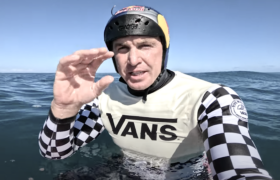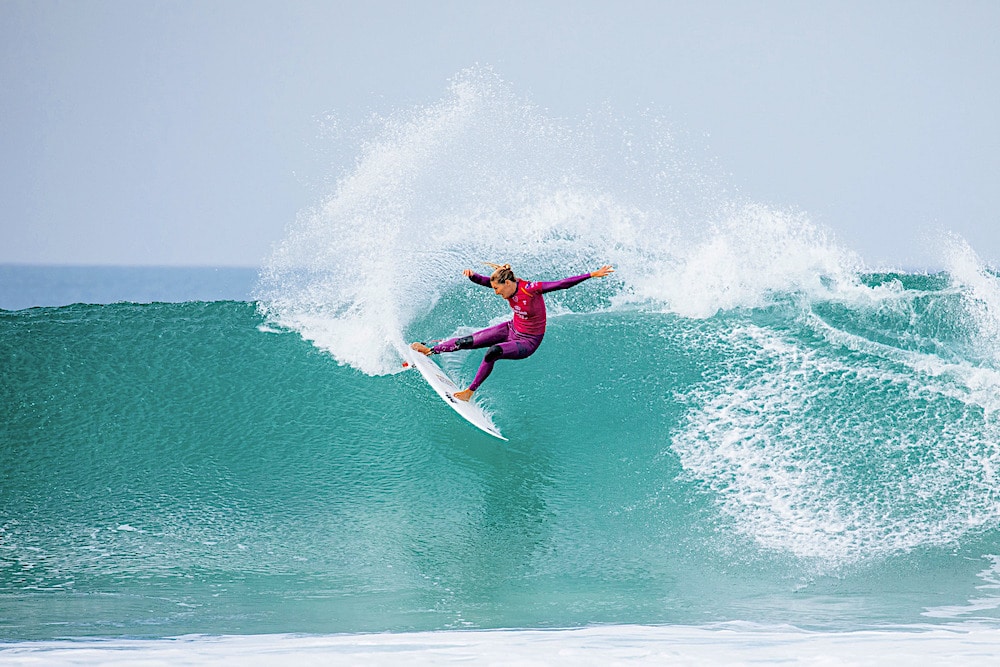Exhibit A: Carissa Moore's 9.5 vs Filipe Toledo's 9.43…
Women’s Sport is hotter than fish grease. Pro leagues have popped up everywhere in Australia, pretty sure it’s happening in Europe and the Americas too.
Megan Rapinoe would be elected Prez of the USA if she ran against Trump in the 2020 election after winning the World Cup. Nothing but blue sky ahead for women surfers with pro careers in their sights.
Australian male pro surfing is circling the drain; the gals are dominating.
In the last few days in between J-Bay and pumping surf at my home point I’ve visited the Skullcandy Grom Comp. Girls shredding everywhere, huge girl energy, everywhere you look girls are taking over.
You can’t deny the success of the investment Natasha Ziff, co-waterperson of the Year 2018, has made in Women’s Pro surfing. Three months ago, I watched a seventeen-year-old Floridian girl walk away from onshore 2ft D-Bah with a cheque for a hundred grand US in her hand.
WSL has made a gamble to put itself on the right side of history and so far the mainstream media has gobbled it up. It might turn out to be the smartest move pro surfing has ever made in it’s topsy turvy forty-five-year history.
The most stunning aspect of the Founders Cup last May was how close or non-existent the gap between Gilmore, Wright, Moore and the top men was in the basin. Steph was the most watchable of all the surfers, male or female. Easily eclipsing, on that day, John John Florence. These aren’t value judgements, just facts of the matter.
The disparity between pay cheques between men and women has gone. The performance gap has not, but it’s closing. The most stunning aspect of the Founders Cup last May was how close or non-existent the gap between Gilmore, Wright, Moore and the top men was in the basin. Steph was the most watchable of all the surfers, male or female. Easily eclipsing, on that day, John John Florence. These aren’t value judgements, just facts of the matter.
WSL now feels confident in an ever closer integration of mens and womens events. They share the same contest windows, and the same eyeballs. Both live and online. The days of a separate Tour schedule are almost over, apart from legacy events like Pipeline and waves still considered too gnarly like Teahupoo. They share the same audience, the same prizemoney, the same lineups, the same criteria but to even the most casual viewer the scale used to put a number on their rides is wildly different.
I said last night that it was a lack of capacity that stopped me watching more women’s pro surfing and that is true. But there is more. After watching six hours of men surfing and then in the same lineup with the same judging panel the numbers thrown at the women seem ridiculously inflated.
I said last night that it was a lack of capacity that stopped me watching more women’s pro surfing and that is true. But there is more. After watching six hours of men surfing and then in the same lineup with the same judging panel the numbers thrown at the women seem ridiculously inflated.
Steph’s two sixes would be fours or maybe fives. Caz Marks’ eight would be more like a six. The most glaring example was Carissa Moore’s 9.5 from her quarter-final with Johanne Defay. A good wave, a great wave. Three nice turns, a fun little tube-ride.
When we put side by side with Filipe Toledo’s 9.43 opener for his heat against the Panda the difference is stark. Staggering. Every variety of top turn and power carve on display with a strong ending.
Why the discrepancy? With the women on full pay do they really need the babyfood scores fed to them like mashed banana? Is it not disrespectful to their status as athletes and elite level surfers to be so clearly patronised by exactly the same judging panel using the same criteria?
What message does it send to the kiddies, the future?
That we’ll pay you the same but score you differently?
Down at the Oz Grom Comp I watched the best kids of the future. Gals shredding as hard as boyos. What incentive have they got to elevate the level, to future proof the sport if they know they are going to get fed highballed scores for surfing well below the level they are capable of reaching.
Equal pay has been a boon for women’s surfing. Time for an equal judging scale to be applied if the Tours are to co-exist.





